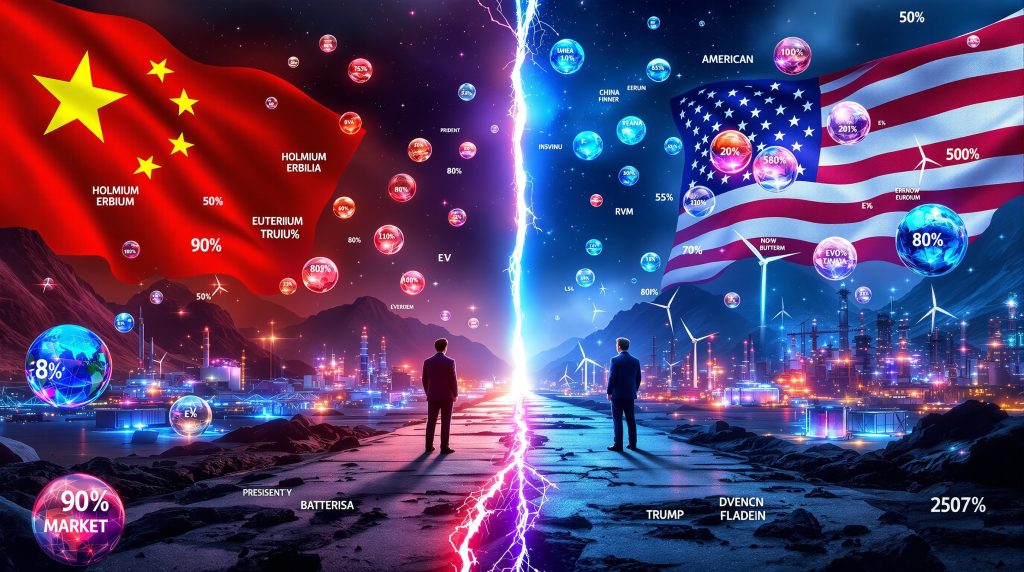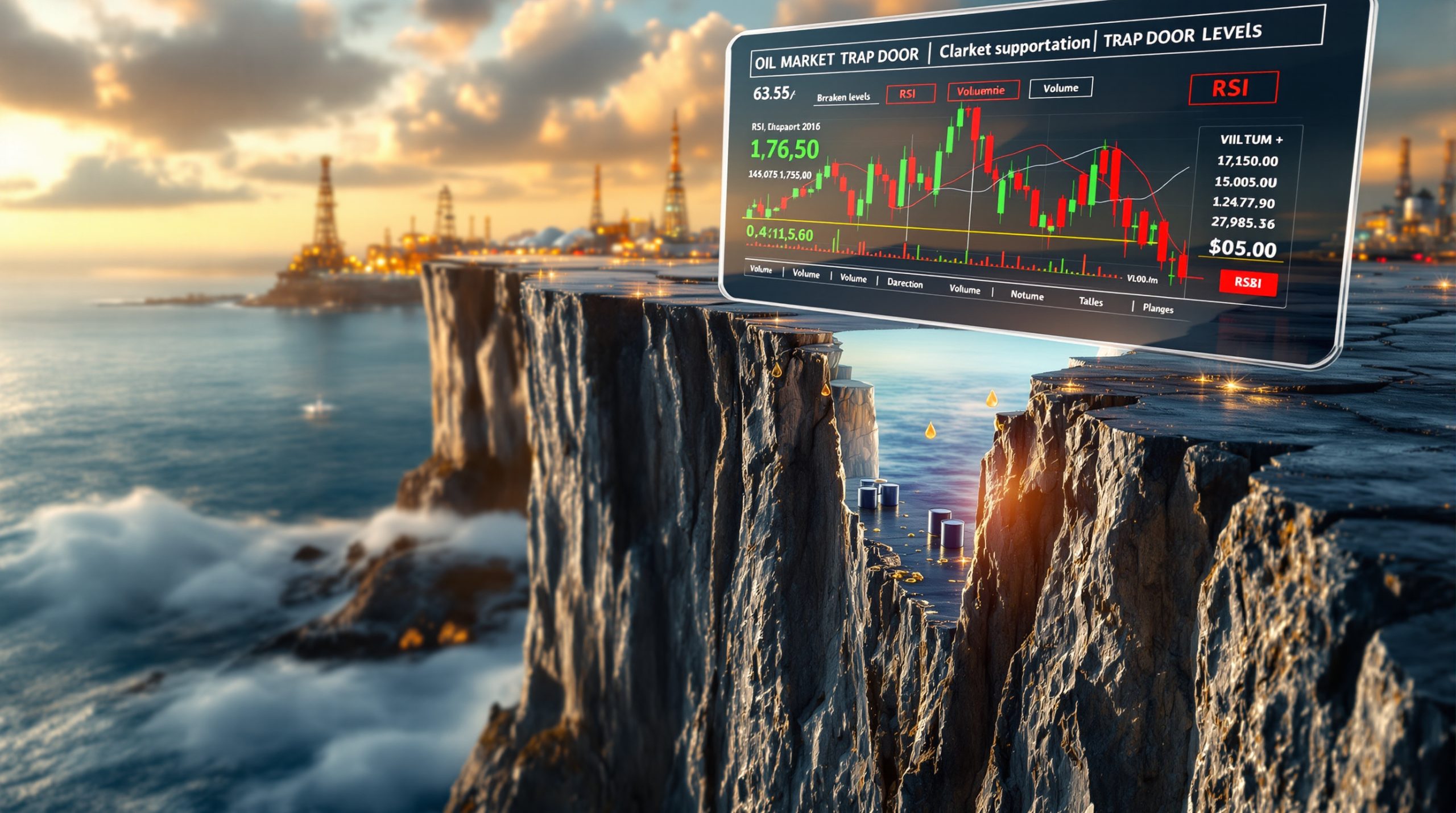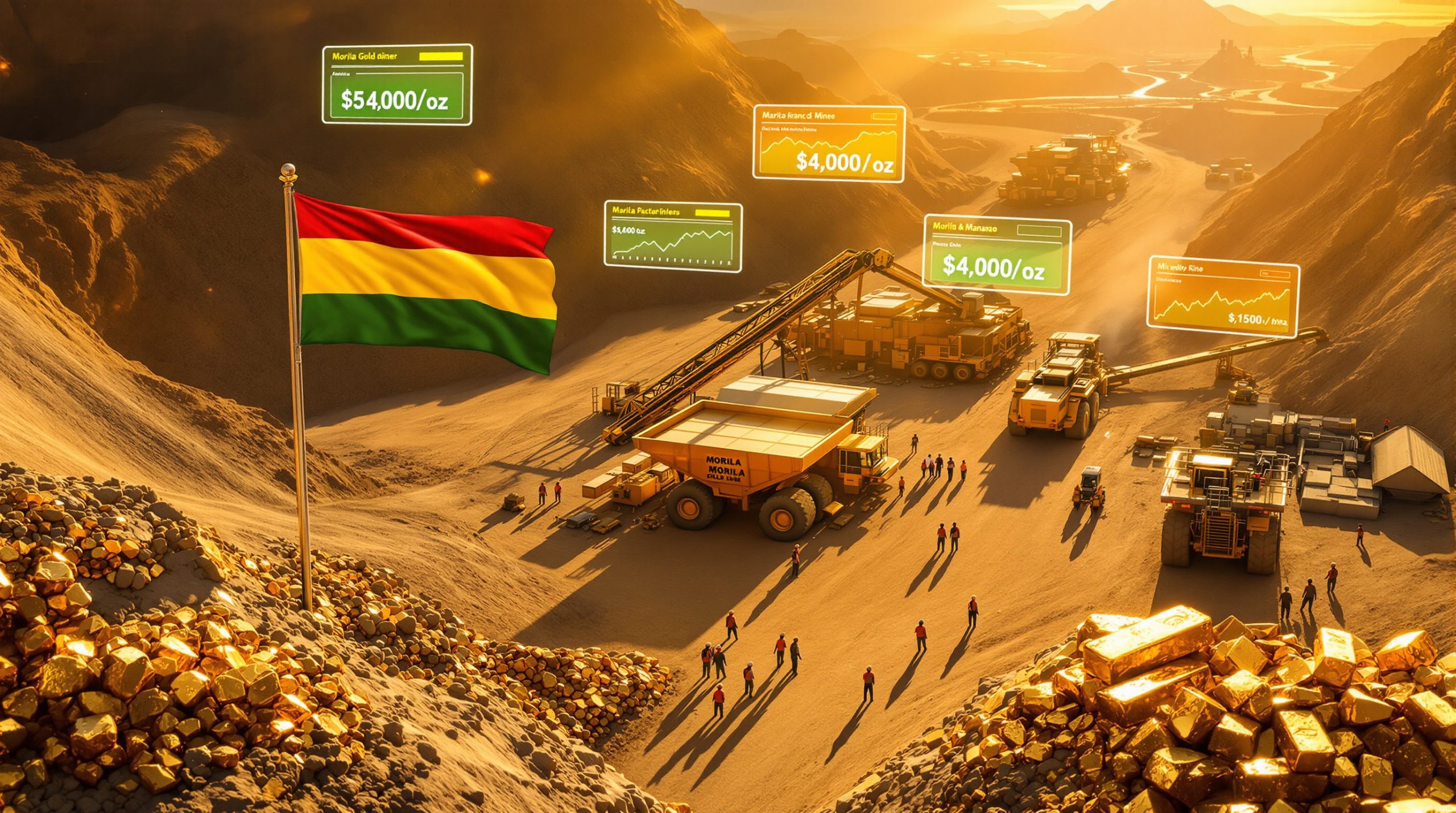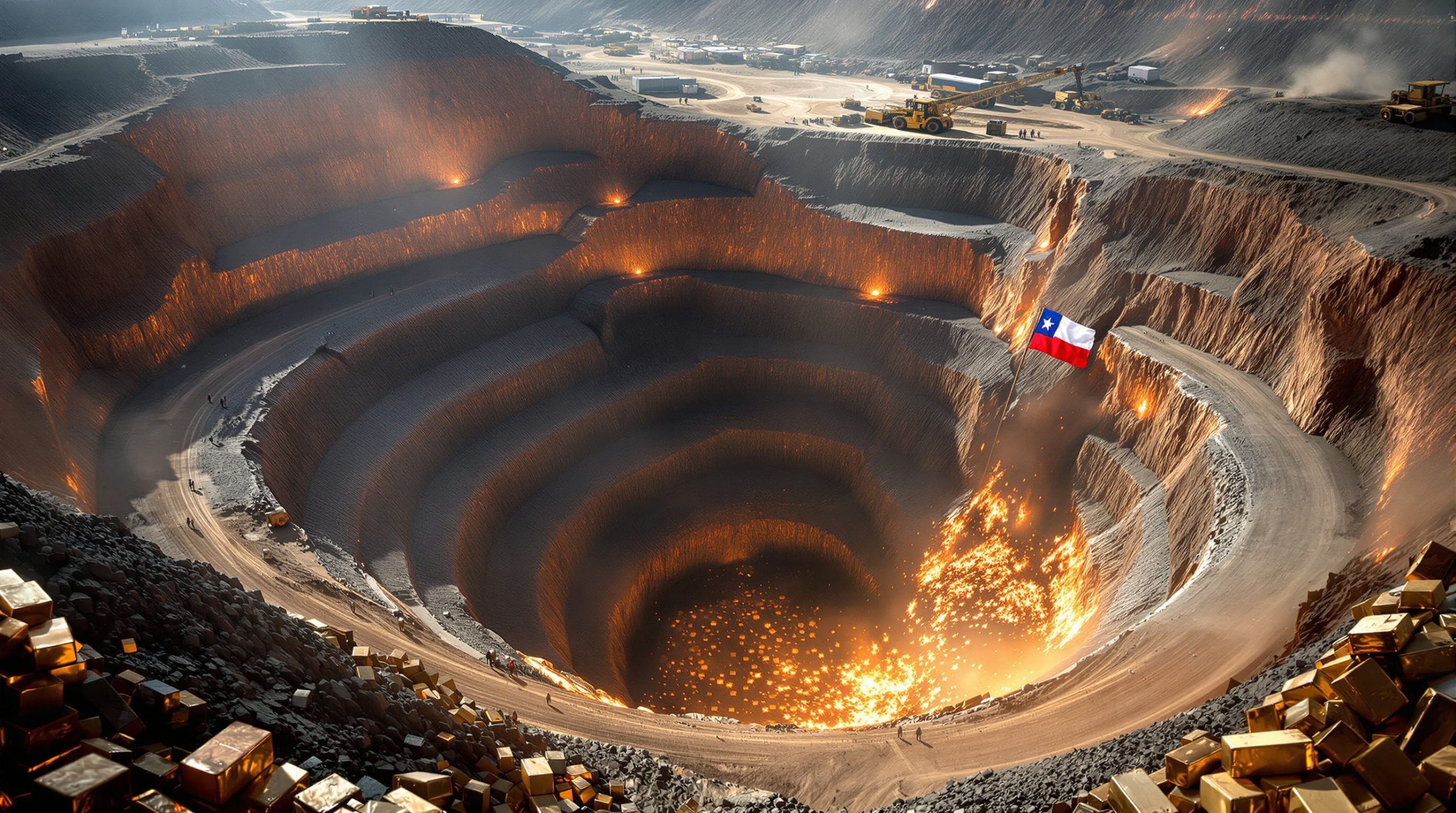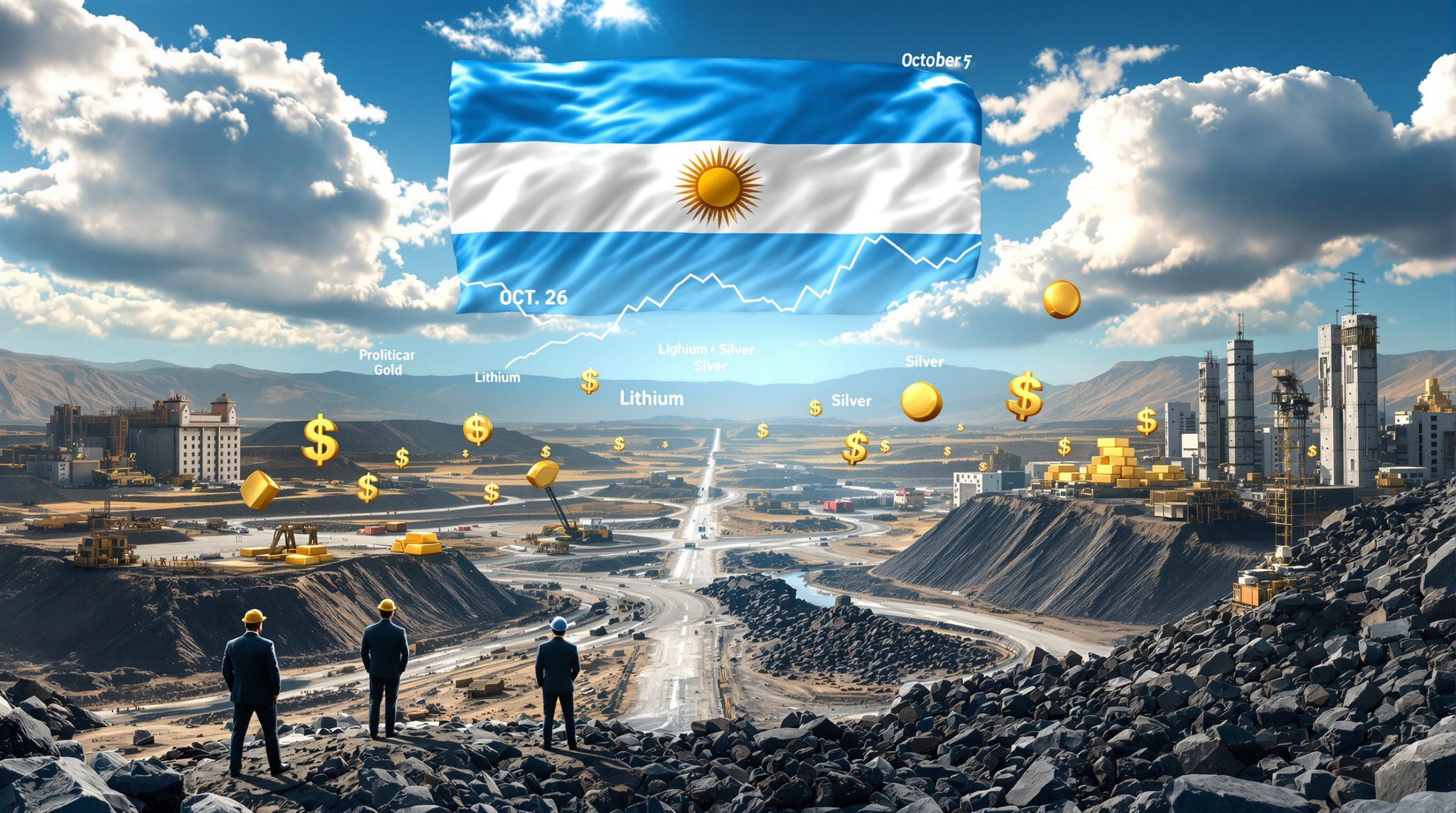China's Rare Earth Export Controls: Strategic Implications for Global Supply Chains
China has dramatically expanded its rare earth export restrictions, adding five additional elements and various refining technologies to its controlled list. This strategic move, announced by China's Ministry of Commerce on October 10, 2025, introduces new licensing requirements for holmium, erbium, thulium, europium, and ytterbium exports—elements critical for manufacturing advanced technologies including EVs, wind turbines, semiconductors, and defense systems.
New Restrictions and Their Scope
The latest measures significantly broaden Beijing's control over global rare earth supply chains. The restrictions not only cover the raw materials themselves but extend to refining technologies and, for the first time, impose constraints on foreign producers using Chinese materials or equipment.
These export controls represent a calculated strategic move that leverages China's dominant position in rare earth processing, where it handles more than 90% of global production. The comprehensive nature of these restrictions suggests a deliberate attempt to maintain China's technological advantage while potentially responding to Western export controls in other sectors.
The new compliance measures will take effect on November 8, 2025, with additional regulations for foreign companies beginning December 1, 2025, adding further complexity to already strained global supply chains.
Timeline of China's Tightening Export Controls
China has been systematically expanding its rare earth export control framework:
- December 2020: Implementation of Export Control Law establishing the legal foundation for strategic export restrictions
- April 2025: Initial export restrictions on seven rare earth elements (samarium, gadolinium, terbium, dysprosium, lutetium, scandium, and yttrium)
- July 2025: Ban on exports of rare earth alloys, magnets, and chemical mixtures
- October 2025: Expansion to five additional elements and refining technologies
This progressive tightening demonstrates China's strategic approach to leveraging its resource advantages in response to broader geopolitical tensions.
Why Are Rare Earth Elements Strategically Important?
Critical Applications Across Key Industries
Rare earth elements play an indispensable role in numerous high-technology applications despite being used in relatively small quantities:
-
Renewable Energy: Permanent magnets containing neodymium, praseodymium, dysprosium, and terbium are essential for wind turbines and electric vehicle motors. A single 3MW wind turbine contains approximately 600kg of rare earth permanent magnets, while electric vehicle motors typically require 1-2kg of these specialized magnets.
-
Defense Technology: The U.S. Department of Defense identifies rare earths as mission-critical materials. Each F-35 Lightning II fighter jet requires approximately 920 pounds of rare earth materials, while Virginia-class submarines use around 9,200 pounds. Precision-guided weapons, radar systems, and electronic warfare equipment depend heavily on these elements.
-
Consumer Electronics: A typical smartphone contains approximately eight rare earth elements—lanthanum, cerium, praseodymium, neodymium, samarium, gadolinium, terbium, and dysprosium—used in speakers, vibration motors, displays, and glass polishing compounds.
-
Aerospace: Aircraft engines, navigation systems, and satellite components rely on rare earth elements for their unique magnetic, luminescent, and temperature-resistant properties.
-
Medical Technology: MRI systems require superconducting magnets containing significant quantities of rare earth elements, particularly gadolinium, which is also used as a contrast agent in approximately 30% of MRI procedures.
China's Dominant Market Position
China's control over the rare earth supply chain has developed over decades through strategic investments in mining, processing capabilities, and technological expertise:
| China's Rare Earth Industry Dominance | Percentage |
|---|---|
| Global processing capacity | >90% |
| Global mining production | ~60% |
| Refined rare earth exports | ~80% |
| Rare earth magnet manufacturing | ~85% |
This dominance is particularly pronounced in heavy rare earth elements (HREEs), where China controls over 95% of global supply. While China produces approximately 60-70% of raw rare earth materials, its near-monopoly on processing creates a critical bottleneck in global supply chains.
What Is Driving This Strategic Move?
Geopolitical Context and Timing
The announcement comes at a critical juncture in US-China relations, preceding a scheduled meeting between Presidents Donald Trump and Xi Jinping in South Korea later this month. This timing suggests a deliberate strategic calculation by Beijing.
The expansion of rare earth export controls represents a powerful reminder of China's ability to leverage its resource advantages in response to broader geopolitical tensions and trade disputes.
Reciprocal Response to Western Technology Restrictions
China's actions appear to be directly linked to recent Western technology restrictions:
- Follows U.S. lawmakers' calls to expand bans on chipmaking equipment exports to China
- Responds to the U.S. Department of Commerce Bureau of Industry and Security's expanded semiconductor export controls, which affect approximately $30-50 billion in annual semiconductor equipment sales to China
- Demonstrates China's willingness to use its resource dominance as a countermeasure in the ongoing technology competition
This tit-for-tat approach highlights how resource control has become a key tool in the broader strategic competition between major powers.
Strategic Resource Nationalism
The move aligns with China's broader "dual circulation" economic strategy, which emphasizes:
- Greater self-reliance in critical supply chains to reduce vulnerability to external disruptions
- Maintaining leverage in international markets through controlled export policies
- Protecting domestic technological development by ensuring priority access to strategic resources
- Securing long-term economic and national security interests through resource control
According to the Center for Strategic and International Studies, China's 14th Five-Year Plan (2021-2025) emphasizes this "dual circulation" approach, prioritizing domestic consumption and production while maintaining international trade. The strategy aims to reduce dependence on foreign technology while strengthening China's position in global supply chains.
How Are Global Markets Responding?
Immediate Market Reactions
The announcement triggered significant movement in rare earth stocks globally, with particularly strong gains for North American companies:
- Critical Metals Corp: +17%
- Energy Fuels: +11%
- MP Materials: +6%
- USA Rare Earth: +6%
These price movements reflect investors' expectations that Western rare earth producers will benefit from higher prices and accelerated investment as consumers seek alternatives to Chinese supply.
Long-Term Market Implications
Market analysts anticipate several long-term effects:
-
Price Volatility: Historical precedent suggests significant price increases for the newly restricted elements. During previous export restrictions in 2010-2011, neodymium prices surged from $40/kg to over $300/kg within months.
-
Investment Acceleration: Western governments and private investors are likely to increase funding for rare earth projects outside China. This could compress development timelines for projects that might otherwise take 7-10 years from discovery to production.
-
Strategic Stockpiling: Countries may expand strategic reserve initiatives of rare earth materials, similar to Japan's program that maintains approximately 60 days of consumption in strategic reserves.
-
Technology Adaptation: Manufacturers may accelerate research into reduced rare earth usage or alternative materials to mitigate supply risks.
The rare earth market's thin trading volumes and opaque pricing mechanisms make it particularly susceptible to volatility in response to supply chain disruptions, potentially creating both risks and opportunities for investors.
How Could Australian Companies Benefit?
ASX-Listed Companies With North American Exposure
The restrictions could accelerate investment interest in ASX-listed companies with rare earth exposure in North America, where the U.S. is actively funding domestic supply chain projects.
Key Beneficiaries and Their Strategic Positions
American Rare Earths (ASX: ARR)
- Developing significant projects in Wyoming and Arizona
- Directly aligned with U.S. critical minerals strategy goals
- Positioned to benefit from U.S. government funding initiatives, including the Defense Production Act and the Inflation Reduction Act
Vital Metals (ASX: VML)
- Operates the Nechalacho Project in Canada's Northwest Territories
- One of the few rare earth mines outside China already in production
- Established processing relationships in North America, creating a complete value chain outside Chinese control
Arafura Rare Earths (ASX: ARU)
- Developer of the Nolans Project in Northern Territory
- Strategic supplier to global EV manufacturers
- Aligned with U.S. and European decarbonization efforts, potentially benefiting from international partnerships
Iluka Resources (ASX: ILU)
- Developing the Eneabba rare earth refinery in Western Australia
- Positioned to become a key Western alternative in refining capacity
- Diversified minerals portfolio providing financial stability during development phase
Hastings Technology Metals (ASX: HAS)
- Advancing the Yangibana Project in Western Australia
- Established partnerships in Europe
- Growing interest from U.S. buyers seeking supply diversification
Potential Benefits Beyond Share Price Appreciation
Australian companies with rare earth projects face several potential advantages beyond immediate stock price gains:
-
Strategic Investment Access: The U.S. Department of Energy has allocated $3 billion for Battery Material Processing and Battery Manufacturing grants under the Bipartisan Infrastructure Law, with additional funding available through the Inflation Reduction Act.
-
Accelerated Project Development: Government support could fast-track permitting and financing processes that typically delay mining projects.
-
Premium Pricing: Non-Chinese rare earth products may command premium pricing from manufacturers prioritizing supply security over cost.
-
Enhanced Government Support: Australian projects align with both domestic defence-critical materials strategy and U.S.-Australia defense cooperation, potentially unlocking additional support mechanisms.
-
Long-Term Offtake Agreements: Western manufacturers seeking supply security may offer favorable long-term purchase agreements to support project development.
What Does This Mean for Global Supply Chains?
Supply Chain Bifurcation
Industry analysts describe the move as accelerating a "structural bifurcation" of global supply chains:
- China focusing on localizing its rare earth and semiconductor value chains to ensure domestic technological development
- Western nations racing to build alternative refining and processing capacity through coordinated investment programs
- Creation of parallel ecosystems for critical materials based on geopolitical alignment rather than pure economic efficiency
This bifurcation reflects a fundamental shift from globalized, efficiency-focused supply chains toward regionalized, security-oriented networks.
Western Response Strategies
Western nations are implementing multi-faceted approaches to reduce dependency on Chinese rare earth supplies:
-
Domestic Production Incentives: The U.S. Inflation Reduction Act provides production tax credits of 10% for critical minerals and up to 30% for clean energy manufacturing, specifically prioritizing North American and Free Trade Agreement partner sourcing.
-
Strategic Partnerships: The Minerals Security Partnership (14 nations) and bilateral agreements prioritize supply from democratic allies, accepting potentially higher costs in exchange for supply security.
-
Technology Development: Western governments are funding alternative processing methods, with the U.S. Department of Energy's ARPA-E program supporting research into rare earth alternatives.
-
Stockpile Creation: Japan's approach to maintaining approximately 60 days of rare earth consumption in strategic reserves may be adopted by other nations concerned about supply disruptions.
-
Trade Policy Alignment: Democratic allies are increasingly coordinating their approaches to critical minerals energy security, creating a more unified response to China's market dominance.
The European Commission exemplifies this approach, targeting processing at least 40% of critical raw materials consumed within member states by 2030 and recycling 15% of critical materials. This represents a strategic shift from near-complete import dependence for several rare earth elements.
What Are The Long-Term Implications?
Reshaping of Global Resource Geopolitics
China's export controls are accelerating several fundamental shifts in how nations approach resource security:
-
Friend-Shoring Acceleration: Countries are increasingly prioritizing politically aligned trading partners for critical materials, even at premium prices.
-
Premium for Stable Jurisdictions: Mining projects in politically stable, Western-aligned countries may receive higher valuations due to their strategic importance.
-
Government Intervention: Increased direct government involvement in rare earth supply chains through investment, regulation, and strategic stockpiles.
-
New International Frameworks: Development of new multi-lateral agreements governing critical minerals trade among like-minded nations.
According to the Center for Strategic and International Studies, "friend-shoring" involves preferential trade and investment relationships among politically aligned nations. For critical minerals, this includes formal partnerships like the U.S.-Australia-Japan-India Quad partnership and bilateral agreements prioritizing supply from democratic allies.
Investment Considerations
The emerging rare earth landscape creates several investment implications:
-
Supply-Demand Imbalance: The International Energy Agency projects demand for rare earth elements could increase by 3-7 times by 2040 under various clean energy transition scenarios, creating potential for sustained higher prices.
-
Capital Requirements: Developing alternative supply chains requires substantial investment—approximately $15-25 billion over the next decade to meaningfully diversify global rare earth supply chains.
-
Value Chain Integration: Companies controlling multiple stages of the rare earth value chain may receive premium valuations due to their strategic importance.
-
Acquisition Activity: Established mining companies and OEMs may acquire early-stage rare earth projects to secure future supply.
Technology Development Impacts
The supply chain disruption is driving several technological responses:
-
Materials Research: Manufacturers are increasing funding for research into reduced rare earth usage or complete alternatives.
-
Recycling Expansion: Urban mining initiatives are targeting electronic waste, although current battery recycling advancements remain below 1% due to technical and economic challenges.
-
Resource Efficiency: Product designers are optimizing rare earth usage to minimize supply vulnerabilities.
-
Alternative Technologies: Development of non-rare earth motors, magnets, and other components that can perform similarly to rare earth-based systems.
How Can Investors Position For This New Reality?
Key Investment Criteria for Rare Earth Companies
Investors evaluating rare earth opportunities should consider several factors:
-
Geographic Location: Projects in politically stable, Western-aligned jurisdictions with clear permitting pathways
-
Development Stage: Near-term producers with defined timelines to production face lower execution risk than early-stage exploration projects
-
Processing Capability: Companies with refining expertise or established processing partnerships can capture more of the value chain
-
Customer Relationships: Established connections with Western manufacturers provide revenue visibility and potential financing support
-
Government Support: Projects aligned with national security interests may receive expedited permitting, financing assistance, and offtake agreements
Risk Factors to Consider
Despite the positive investment thesis, significant challenges remain:
-
Technical Complexity: Rare earth processing involves chemically intensive, environmentally challenging processes requiring specialized expertise developed over decades in China.
-
Capital Intensity: Establishing rare earth refining capacity requires $500 million to $1.5 billion in capital investment and 5-7 years for facility development.
-
Potential Oversupply: If too many Western projects advance simultaneously, new capacity could eventually exceed demand, pressuring prices.
-
Regulatory Hurdles: Environmental permits for processing facilities remain challenging in many Western jurisdictions due to concerns about radioactive byproducts.
-
Chinese Counter-Strategies: China could potentially lower prices temporarily to make Western projects uneconomical or increase investment in rare earth resources outside its borders.
FAQs About China's Rare Earth Export Controls
What specific rare earth elements are now under export control?
The latest restrictions add holmium, erbium, thulium, europium, and ytterbium to the previously restricted elements (samarium, gadolinium, terbium, dysprosium, lutetium, scandium, and yttrium). These elements are critical for applications ranging from fiber optic communications and lasers to specialized glass and nuclear technologies.
How quickly could Western supply chains adapt to these restrictions?
Developing alternative rare earth supply chains typically requires 5-10 years for new mines and 3-5 years for processing facilities. However, accelerated government funding and existing projects could potentially reduce these timeframes. The most immediate responses will likely come from existing producers expanding capacity rather than entirely new operations.
Will these restrictions affect consumer product prices?
While rare earths represent a small portion of final product costs (typically less than 2% of an EV's cost), sustained supply constraints could eventually impact pricing for products like EVs, smartphones, and wind turbines if manufacturers cannot secure alternative supplies. The more immediate impact may be on product availability rather than direct price increases.
How might China respond to Western efforts to develop alternative supplies?
China has several potential counter-strategies, including temporarily lowering rare earth prices to make Western projects uneconomical, increasing investment in rare earth resources outside China, developing new technologies that reduce reliance on restricted elements, or offering preferential access to manufacturers who maintain production facilities within China.
What role will recycling play in addressing rare earth supply challenges?
Recycling currently accounts for less than 1% of rare earth supply but could grow significantly as new technologies and economic incentives develop. Urban mining of electronic waste represents a potentially significant future source, though technical challenges include the low concentrations of rare earths in individual products and complex material mixtures.
Ready to Stay Ahead of the Next Major Mineral Discovery?
Receive instant alerts on significant ASX mineral discoveries with Discovery Alert's proprietary Discovery IQ model, transforming complex announcements into actionable investment insights. Explore why major discoveries can lead to substantial returns by visiting our dedicated discoveries page and begin your 30-day free trial today.
